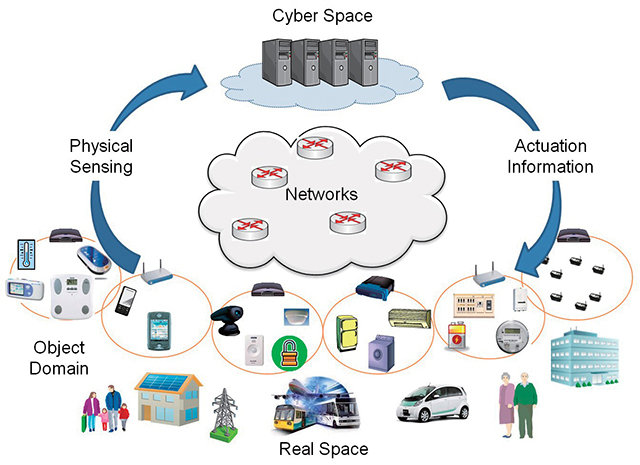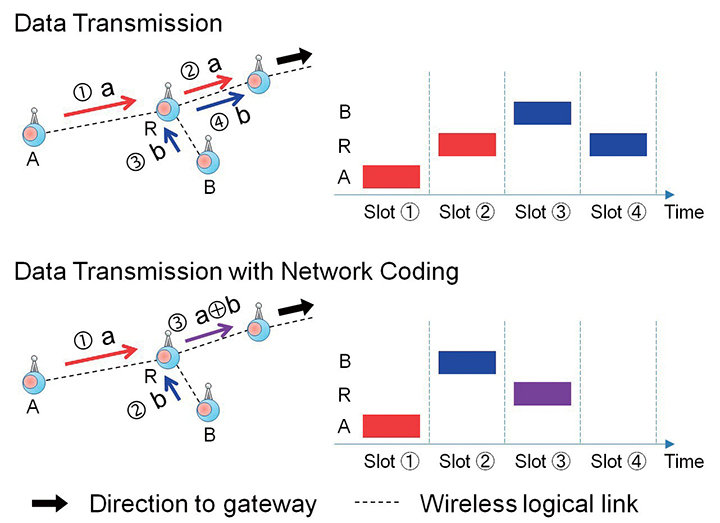
For Forthcoming Research on Quantum,
Wireless, Sensor and Energy
Laboratory on Advanced Networking
Professor:LIM, Yuto
E-mail:
[Research areas]
Quantum Network, Wireless Communication System, Cyber-Physical Systems, Energy Distribution
[Keywords]
Quamtum, Wireless, Network, Sensor, Energy
Skills and background we are looking for in prospective students
The basic knowledge of English, Mathematics, and Communication Systems and Networks is required. The skills of interpersonal communication, programming, oral presentation, information gathering and interpretation, and caricature drawing are also required.
What you can expect to learn in this laboratory
Students will able to explain their research work clearly and systematically in the fields of wireless communication and networks. Students also will gain much confidence in their own research work with new, innovative and fruitful ideas of both future wireless and sensor domains. In addition, students will able to express their firm opinions and perform logical discussions among diverse students, scholars, scientists and researchers in wide range of disciplines.
【Job category of graduates】 Information and Communications, IT Industry, Consultancy, and so on.
Research outline

Figure 1: CPS integrates cyber world and real world.

Figure 2: Data transmission using WNC technique
The wireless world never stops growing. This results many people are connected wirelessly with mobile devices that allows them to keep up with the upto-date information. The next largest breakthrough will be the sensory swarm, which enables more pervasive wireless networking and the vast deployment of sensors and actuators. The sensory swarm gives rise to the emergence of cyber-physical systems concept, which comprises the information-gathering network that would feed the massive information technology core with mountains of raw data to be processed and spun back out to us on our portable computing devices and laptops in a timely manner. These wirelessly sensors and actuators will be quite complex, requiring self-contained radio frequency, digital circuitry, clocks, and processing engines. Thus, it inspires architectures that will afford an order-of-magnitude improvement in efficiency and resource management. Our disciplinary research focuses on cyber-physical systems, sensor network system, wireless communications and quantum networks.
1. Cyber-Physical Systems (CPS)
CPS contributes to safety, efficiency, comfort and human health, and help solving key challenges of our society, such as the ageing population, limited resources, mobility, or the shift towards renewable energies. One example of CPS applications is a smart home automation for comfort control. In smart homes, appliances, devices, sensors, and actuators are expected to assist people live on their own comfortable, relax, restful, and pleasant.
2. Wireless Network Coding (WNC)
WNC refers to a technique where a wireless device is allowed to generate output data by mixing its received data. The unique characteristics of wireless medium renders WNC particularly advantageous, e.g., this technique can be used to achieve the minimum energy-per-bit for multicasting in a multihop wireless networks. In recent, this technique has been developed into a data link layer. The WNC engine in the data link layer can opportunistically mix the outgoing packets to reduce the transmissions in the air.
Key publications
- J. Chi, X. Zhou, F. Xiao, Y. Lim and T. Qiu, “Task offloading via prioritized experience-based double dueling DQN in edge-assisted IIoT,” IEEE Transactions on Mobile Computing, vol. 23, no. 12, pp. 14575-14591, Dec. 2024, DOI: 10.1109/ TMC.2024.34525023.
- Z. Cui, Y. Lim, and Y. Tan, “Factor graph-based deep reinforcement learning for path selection scheme in full-duplex wireless multihop networks,” Ad Hoc Networks, Elsevier, vol. 161, Aug. 2024, DOI: 10.1016/j.adhoc.2024.103542
- Y. Lim, Y. Lishuai, and Z. Zhong, “Quantum error corrected fidelity routing design for long-distance quantum networks,” in Proc. of the 11th International Conference on Computing, Networking and Communications (ICNC), 2024, pp. 1149-1153, DOI: 10.1109/ICNC59896.2024.1055606
Equipment
JAIST Supercomputer (Cray XC40)
JAIST Simulation Testbed Murubushi
Teaching policy
Our vision is to become an exemplary laboratory of top-class renowned research group for both students and scholars through the pursuit of excellence in mentoring, innovation and research. Our mission is to apply and advance knowledge strategically and innovatively to explore the research domains, quantum networks, wireless communication and smart sensor environmental, which have enormous potential to change the way people and things communicate.
[Website] URL:https://www.jaist.ac.jp/is/labs/lim-lab/